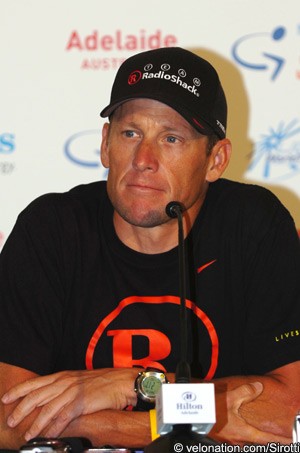“It is the right decision and I commend them for reaching it”
 Responding to today’s news that the US federal investigation into the United States Postal Service team had been dropped, its former chief rider Lance Armstrong has welcomed the decision.
Responding to today’s news that the US federal investigation into the United States Postal Service team had been dropped, its former chief rider Lance Armstrong has welcomed the decision.
“I am gratified to learn that the US Attorney’s Office is closing its investigation,” he said in a brief statement. “It is the right decision and I commend them for reaching it. I look forward to continuing my life as a father, a competitor, and an advocate in the fight against cancer without this distraction.”
Armstrong and the team had been investigated for over a year and a half by federal officials. United States Attorney Andre Birotte Jr. issued a statement on Friday stating that his office had closed the investigation into what it termed, ‘allegations of federal criminal conduct by members and associates of a professional bicycle racing team owned in part by Lance Armstrong.’
US Anti-Doping Agency CEO Travis T. Tygart however stated that the matter wasn’t yet over. “Unlike the U.S. Attorney, USADA’s job is to protect clean sport rather than enforce specific criminal laws,” he indicated in a statement.
“Our investigation into doping in the sport of cycling is continuing and we look forward to obtaining the information developed during the federal investigation.”
Armstrong has consistently denied using banned substances. He and said that the former team-mates who made claims against him were not telling the truth.
Evolution of long, complicated case:
The investigation began two years ago when the Rock Racing team was put under the microscope by federal agents, including Jeff Novitzky. He had previously been part of exposing the Balco affair and began digging deeply. On May 20th 2010 Armstrong’s former USPS team-mate Floyd Landis dramatically confessed to doping, almost four years after being disqualified from his victorious result in the Tour de France for using testosterone, and implicated both Armstrong and the team.
In June 2010 the World Anti-Doping Agency’s director general David Howman said that he believed the investigation would yield results, but warned it would take time. “I think we are very optimistic that this inquiry will be a fruitful one,” he told the New York Times then. “But this is going to take some time because we’re not really talking about a simple antidoping case here. Remember the BALCO case, how long that took? Well, we could be still talking about this one in 2016.”
After that more agencies become involved, including the Federal Bureau of Investigation , the U.S. Postal Service’s Office of Inspector General, plus both the civil and criminal divisions of the Department of Justice.
Several investigators travelled to Europe in the course of that investigation, meeting with anti-doping officials and police representatives from Italy, France and Belgium.
In February it was confirmed by AFLD president Bruno Genevois that the agency was starting the process of handing over Lance Armstrong’s 1999 Tour de France samples, which l’Equipe reported in 2005 had shown traces of EPO.
Two months later, Italian law enforcement officials investigating the activities of the controversial doctor Michelle Ferrari said that Armstrong had repeatedly visited the Italian, despite formally severing ties with him in 2004. He said that the Texan met Ferrari ‘frequently,’ most often in St. Moritz in Switzerland, but also in Monaco.
Ferrari had previously been convicted of sporting fraud and abusing his medical license to write prescriptions, having his medical licence was suspended for a year. He was able to overturn this ruling on appeal as the statute of limitations had expired on evidence presented in the original case, but remains banned for life by the Italian Cycling Federation.
Armstrong’s spokesman Mark Fabiani confirmed that the rider and the doctor had met, but claimed that they were personal visits only.
Then in May 2011, another former USPS rider came forward. Like Landis, Tyler Hamilton also admitted to using banned products and also said that both Armstrong and the team were involved. Weeks later, he was involved in an alleged altercation with Armstrong in a restaurant in Aspen, and claimed afterwards that an attempt was made to intimidate him.
In July a complaint was lodged to the US district court in Los Angeles by Armstrong’s lawyers, who listed more than a dozen articles in media outlets over a fourteen month period as being proof of what they claimed were leaks from the investigators.
They said that a judge should order the government to explain why it should not be held in contempt, and said that one option would be to demand journalists reveal their sources.
In August, the U.S. Attorney’s Office spokesman Thom Mrozek stated that it had filed its reply under seal to those claims, and would not comment publicly.
After that point news about the case became more scarce. Despite that, there was a lot of surprise expressed at today’s news, with no previous indications being given that the federal case was nearing a conclusion.